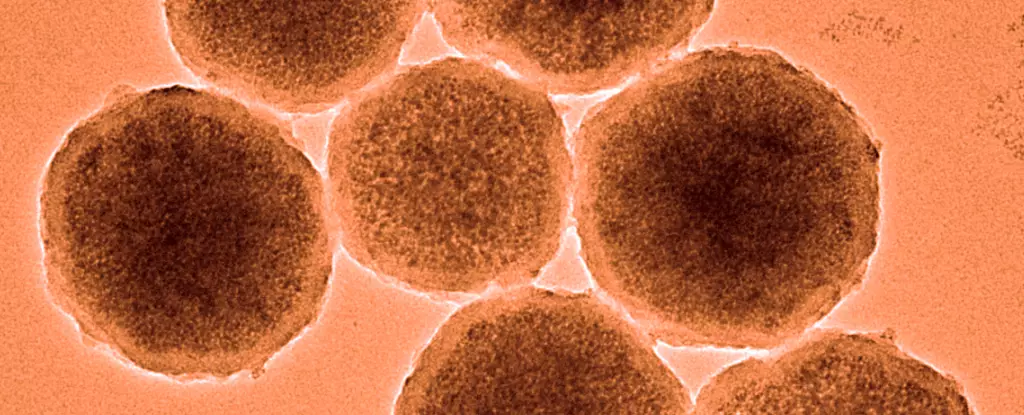Recent advancements in nanotechnology have ushered in a new chapter in medical care, particularly in treating life-threatening conditions like brain aneurysms. An international research initiative spearheaded by experts from Shanghai Jiao Tong University and the University of Edinburgh has produced an innovative solution: tiny, magnetically-controlled spherical nanobots that deliver clotting agents directly to compromised blood vessels. These nanobots could significantly reduce mortality rates attributed to strokes caused by aneurysm ruptures.
With a diameter measuring approximately 300 nanometers, these incredibly small entities outmatch the width of a human hair by a staggering margin. Each nanoparticle features a core of magnetite, enveloped by the critical clotting agent thrombin, encased in a protective layer that dissolves at a temperature just exceeding human body heat. This ingenious design allows for precise delivery of the medication while minimizing risk to surrounding tissues.
The operational mechanics of these nanobots are showcased in their ability to navigate through complex blood vessel networks. Utilizing an ultrasound-guided magnetic field, clinicians can maneuver the devices to specific locations, such as the site of a weakened blood vessel or an aneurysm. Upon reaching the targeted area, the bots are activated using an alternating magnetic field, which melts their protective coating, allowing for a controlled release of thrombin. This leads to the rapid formation of a clot, effectively sealing off the aneurysm and averting the catastrophic consequences that can arise from a rupture.
The research team has conducted extensive trials, confirming the nanobots’ safety and effectiveness. Tests evaluating their clotting abilities, melting points, resistance to degradation, and overall functionality inside a biological setting have yielded promising results. In trials, the nanobots successfully halted at predetermined locations within an animal model’s carotid artery, demonstrating the capability to deliver medication without causing inflammation or injury to the vessel.
Globally, approximately 3% of adults carry brain aneurysms, with a small fraction of these leading to ruptures. Such incidents often culminate in ischemic strokes, characterized by severe outcomes, including disability and death. Current management techniques primarily rely on invasive surgical interventions, which can be risky and may lead to complications, including rejection of surgical materials and trauma at the treatment site.
The introduction of nanobots offers a less invasive alternative that might enhance patient outcomes significantly. By opting for a microscopic approach, healthcare providers could avoid traditional surgical procedures that carry considerable risk. Instead, delivering precise doses of therapeutic agents directly to problematic arteries may streamline treatment and improve patient recovery trajectories.
Although this groundbreaking technology shows immense potential, several challenges must be addressed before its wide-scale clinical application. Currently, the reach of the magnetic fields used to guide the bots is limited, necessitating further innovations to enhance their mobility within the human body. Researchers are investigating ways to increase the penetration depth of these fields, allowing for greater access to internal structures that are not easily reachable by traditional methods.
Moreover, significant ethical and regulatory hurdles must be traversed to enable human trials. Gaining approval for novel medical technologies generally requires comprehensive clinical evaluations to assess long-term safety and effectiveness. With promising results from preclinical trials, the research team is optimistic about translating their findings into human applications, which may revolutionize how we approach the treatment of brain aneurysms and other critical medical conditions.
In essence, the development of magnetically-controlled nanobots represents a significant milestone in the ongoing quest to improve healthcare outcomes for neurological patients. With their ability to deliver medication with unparalleled precision and minimized risk, these nanobots may redefine emergency treatments for brain aneurysms. As the research continues to evolve, the potential to alter the landscape of medical treatments looms large, promising a future where critical conditions can be managed with minimal invasiveness and maximum effectiveness.


Leave a Reply